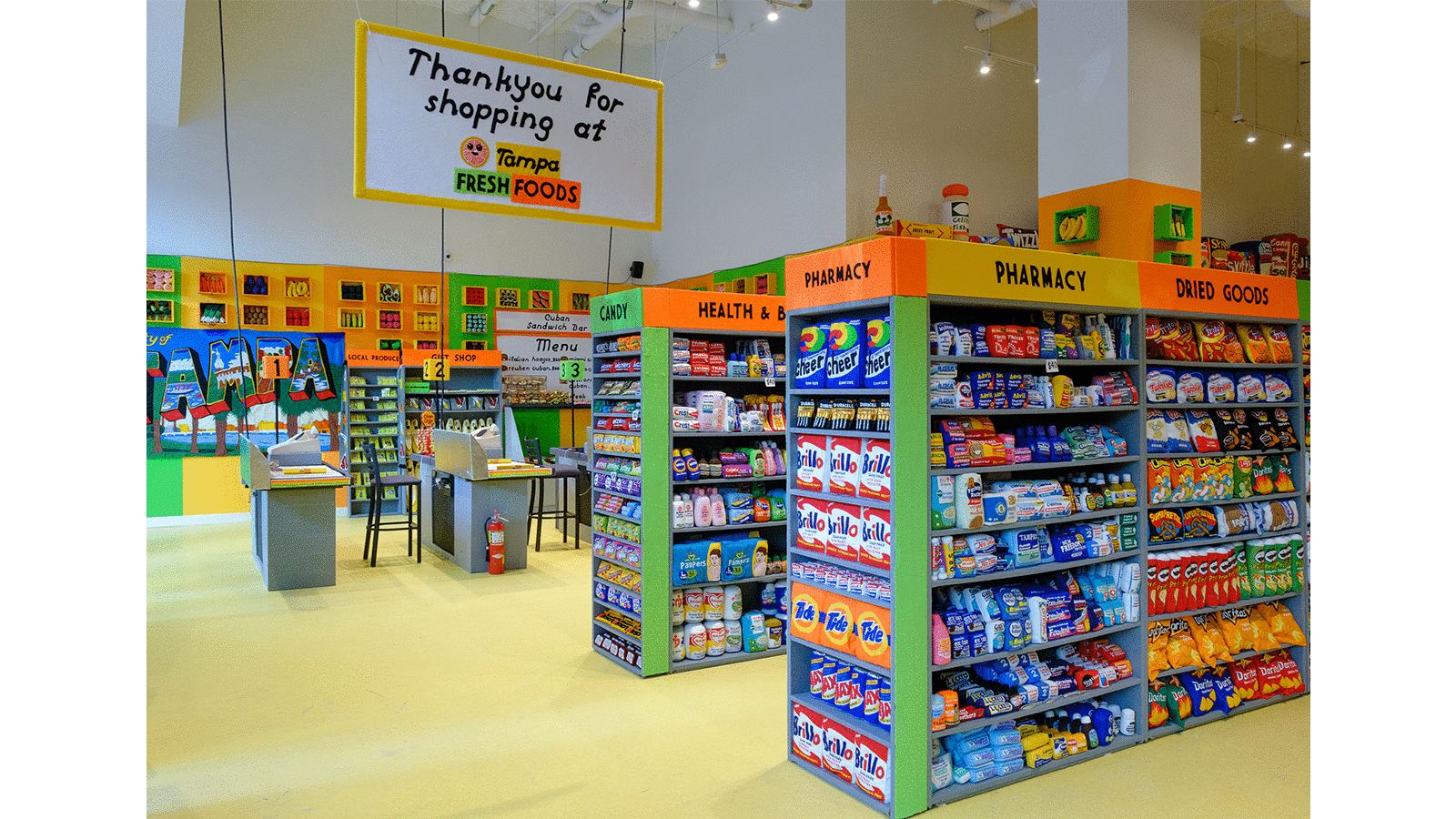A Cultural Park Healing Neglected Towns
Deep in the heart of the ancient Sicilian town of Favara, not far from Agrigento, sits a derelict 19th-century palace that houses a forest. Ivy climbs crumbling grey walls framing a mural of giant painted leaves in varying shades of green. Shrubs line steps that lead upstairs and down to different floors with mazes of rooms with dramatic vaulted ceilings and sun-drenched balconies. Some rooms play projections of nature and wildlife, while others are filled with zen-like music. Rows of vines act as wallpaper, and the braided stems of Guiana Chestnut plants look like mother nature’s version of lampshades. The final set of stairs rises to an art-covered rooftop terrace that faces the rooftops of Favara, its terracotta-tiled cathedral and the arid hills beyond. Introducing Palazzo Miccichè, the latest project from Farm Cultural Park – an ambitious art organisation that healed a neglected town.
Back in 2010, a Sicilian couple, notary Andrea Bartoli and his lawyer wife Florinda Saieva, came up with an idea to regenerate Favara – a small, rundown town suffering from unemployment and poverty. Together they bought several empty buildings and seven courtyards in the semi-abandoned centre and turned it into an open-air art complex where walls are used as canvases and outdoor space for installations and sculptures by international and local artists. Inside, rotating exhibitions focus on political and social issues, and a cafe serves drinks and Sicilian snacks. Over the years, the cultural park has attracted not just tourists but also offered locals a place to meet and socialise.
It has provided much-needed jobs in a town desperate for them, and free workshops for young residents are available, spanning architecture, female leadership skills and politics.
Bartoli and Saieva next restored the then-abandoned Palazzo Miccichè, creating a permanent exhibition space that explores the relationship between nature and humanity.
They aim to fill the building with 1,000 trees to create a green enclave for both locals and visitors. The exhibition, named Human Forest, opened in 2020, just as the pandemic was taking hold, meaning that it remains a little-known secret. “Favara lacks in green areas so it was important for us to create a space in which people could interact with plants and create a mutual relationship,” explains Saieva. “It is a forest, a jungle, a secular-sacred space.”
Earlier this year, the couple opened its first project outside Favara – Palazzo Tortorici in the Baroque town of Mazzarino, which, again, is designed to tackle the depopulation of small Sicilian towns. Highlights include a tranquil Riad-inspired interior garden and courtyard, complete with a pool and chevron tiling.
The building, known as the Embassy, is again filled with contemporary art, design and music but also offers a cinema, creative activities, events and a magazine and newspaper library for young locals. That said, “Farm Cultural Park is more than a cultural centre,” explains Saieva. “It is a community, which is why we often call it The Museum of People.”
Ella Alexander is digital contributing editor at Harper’s Bazaar UK and has written for Glamour UK, Italy Segreta and Mr And Mrs Smith




